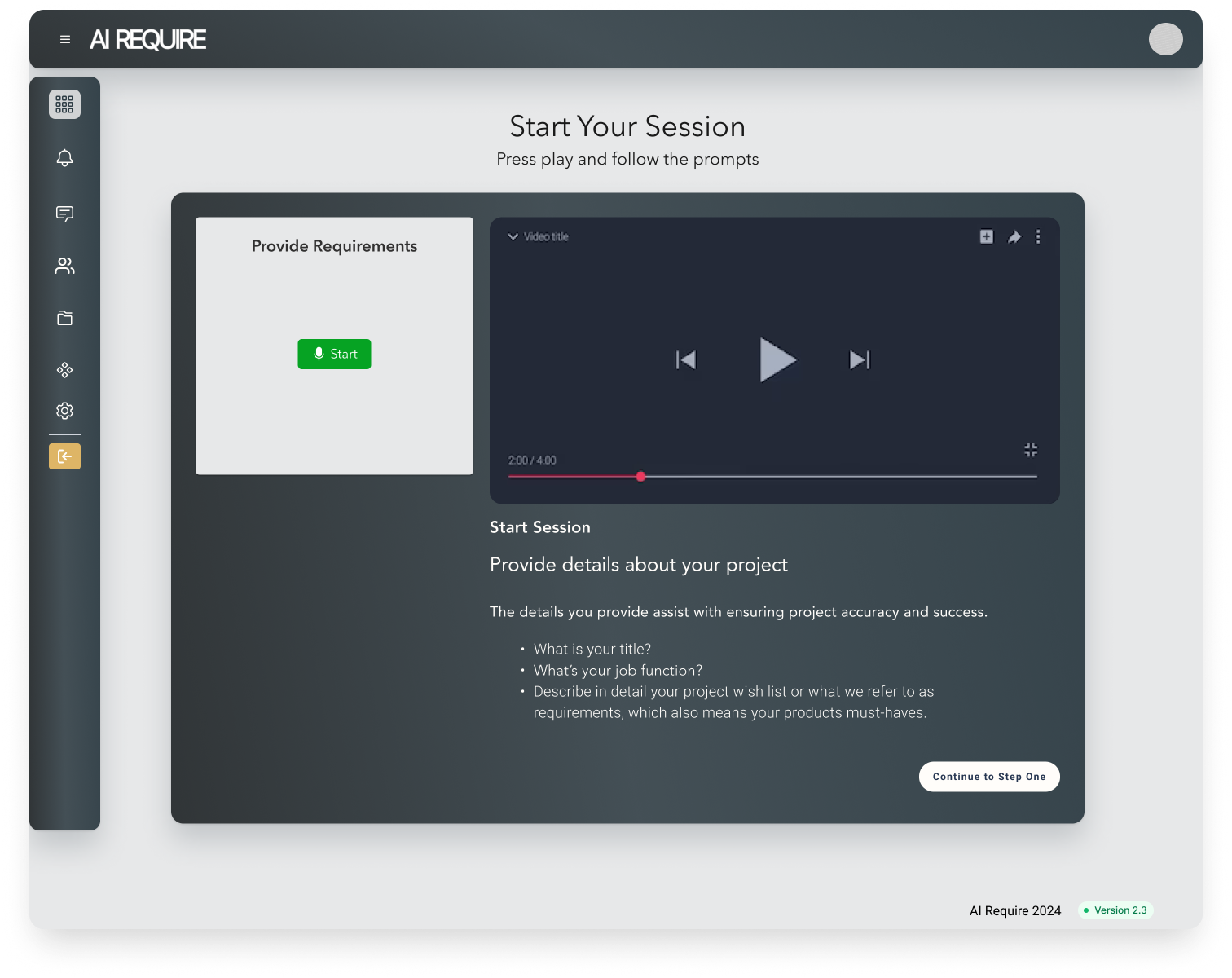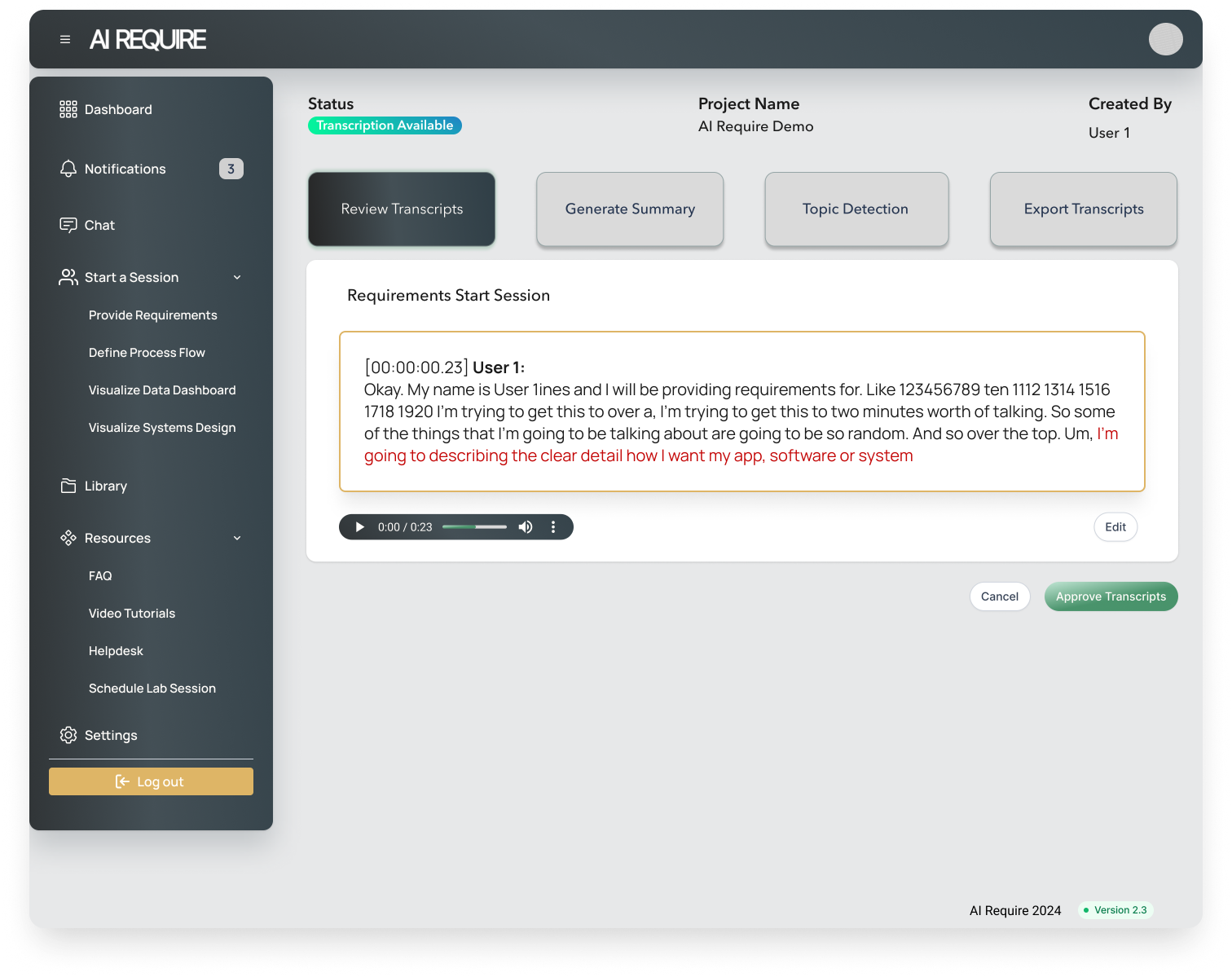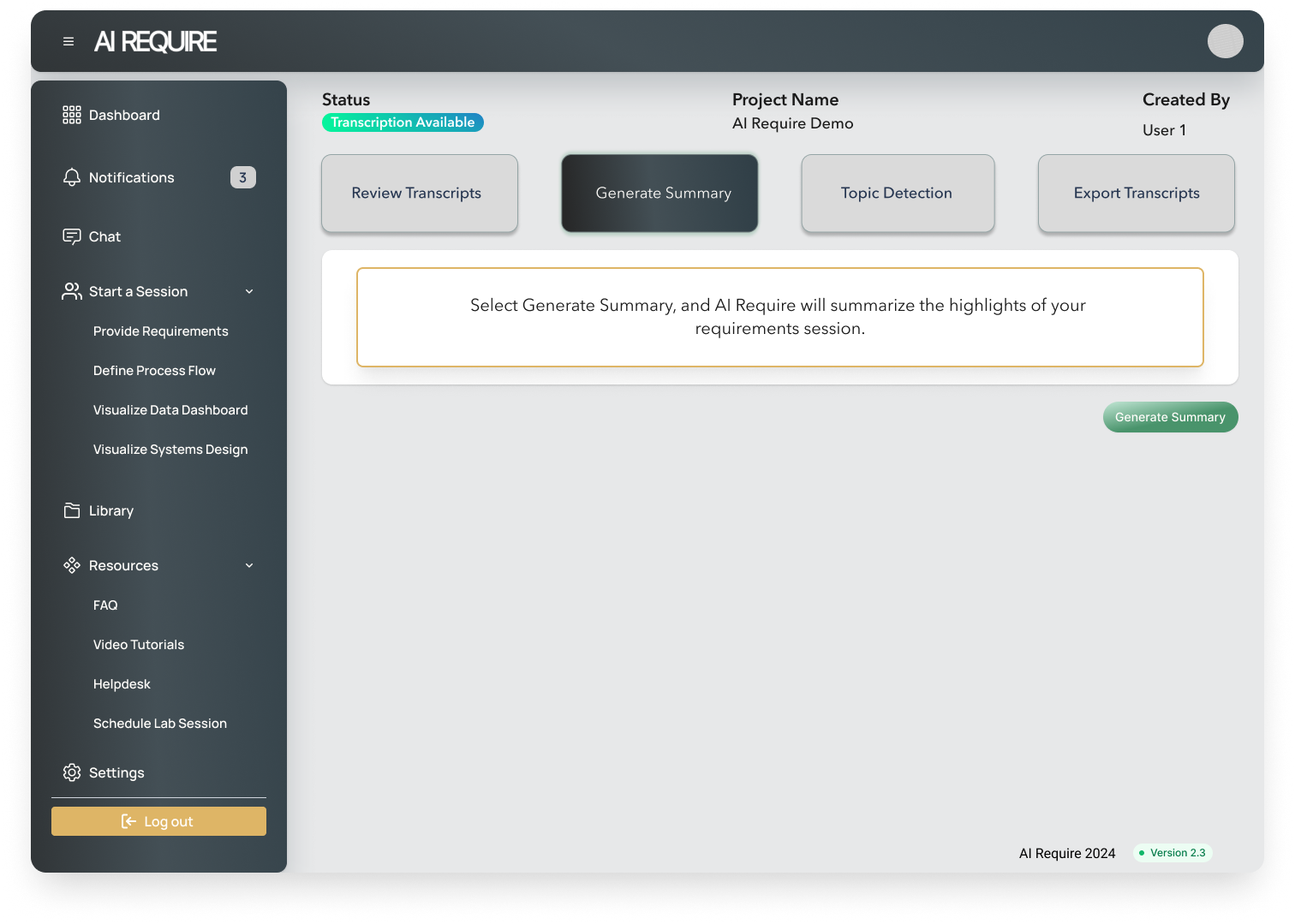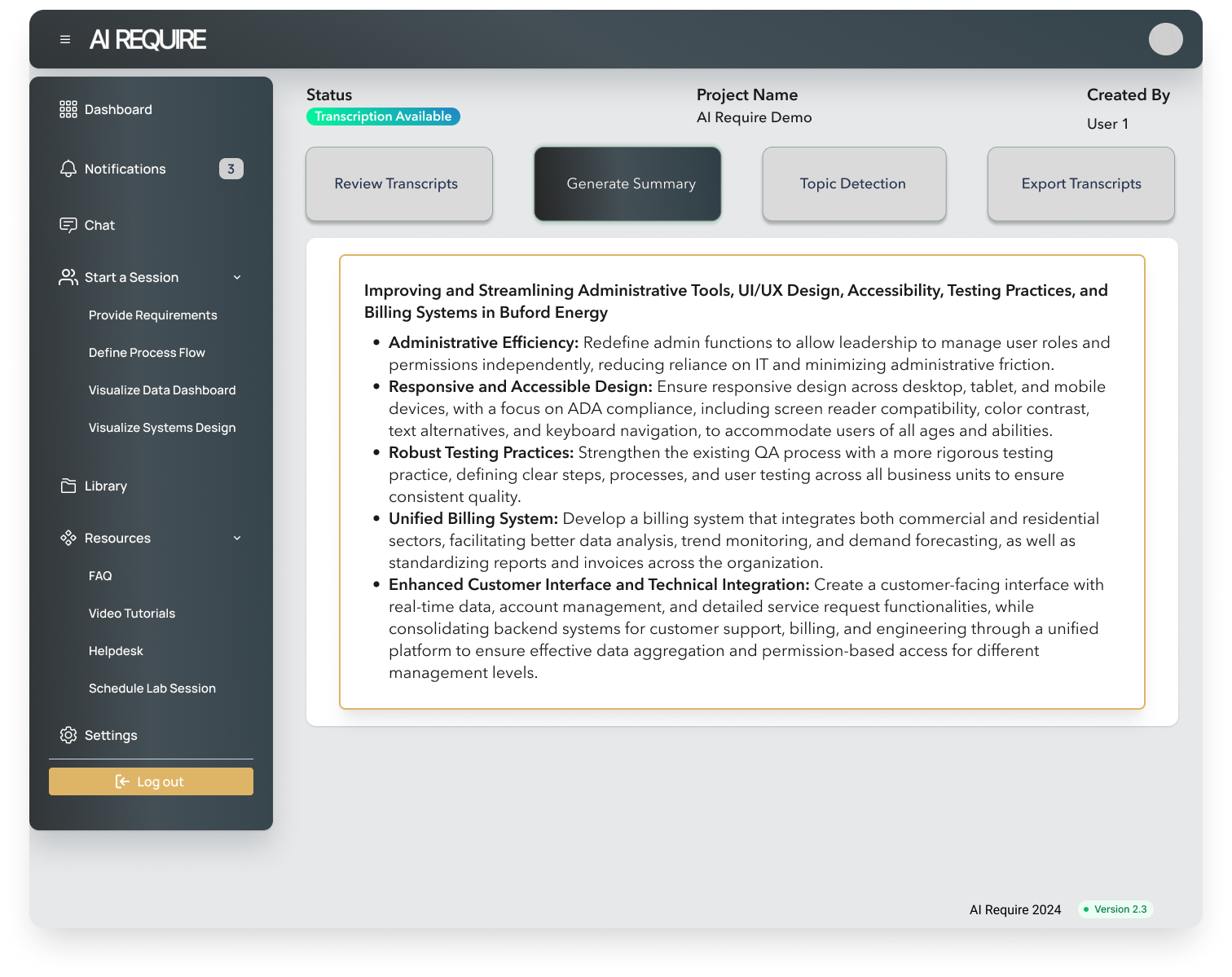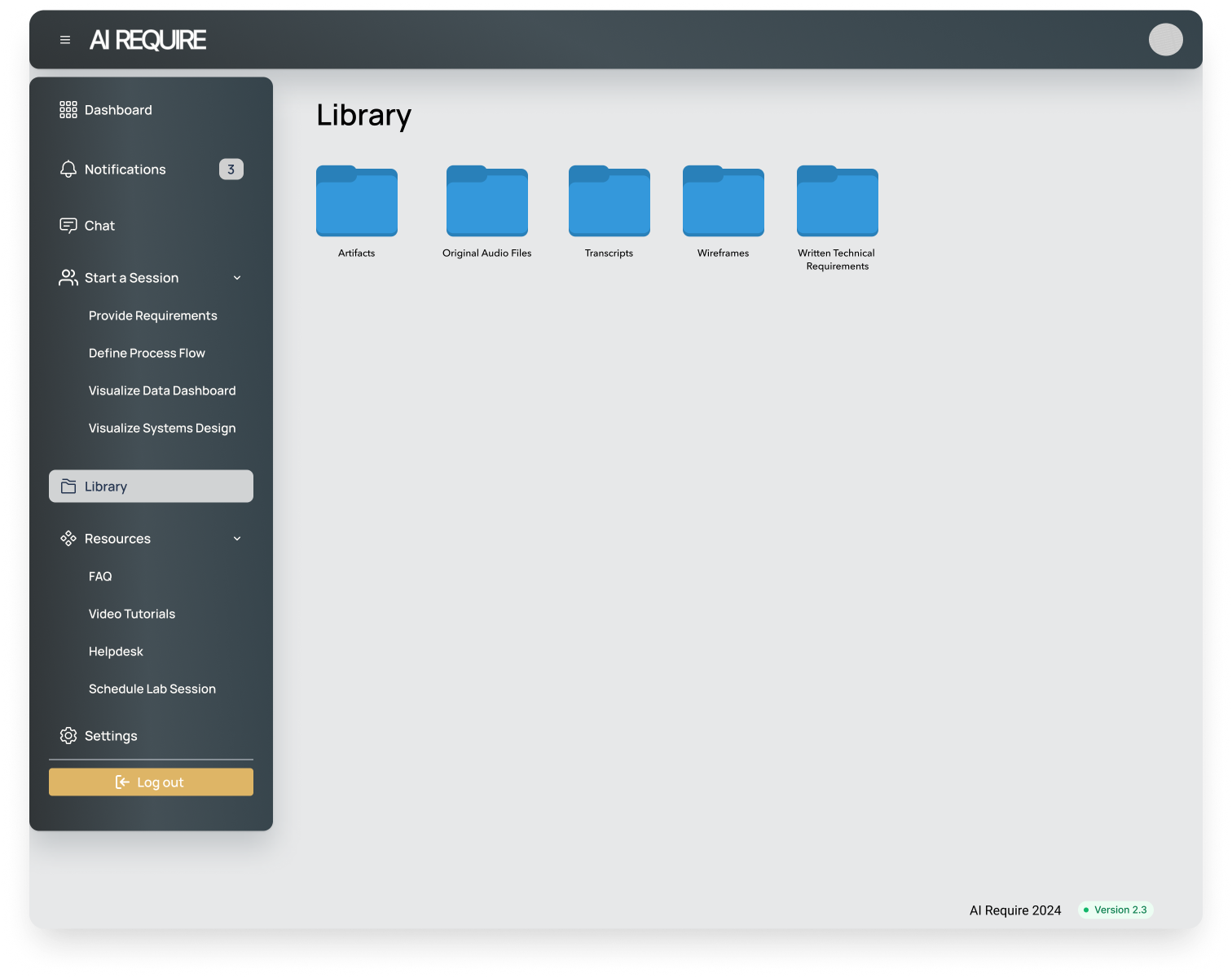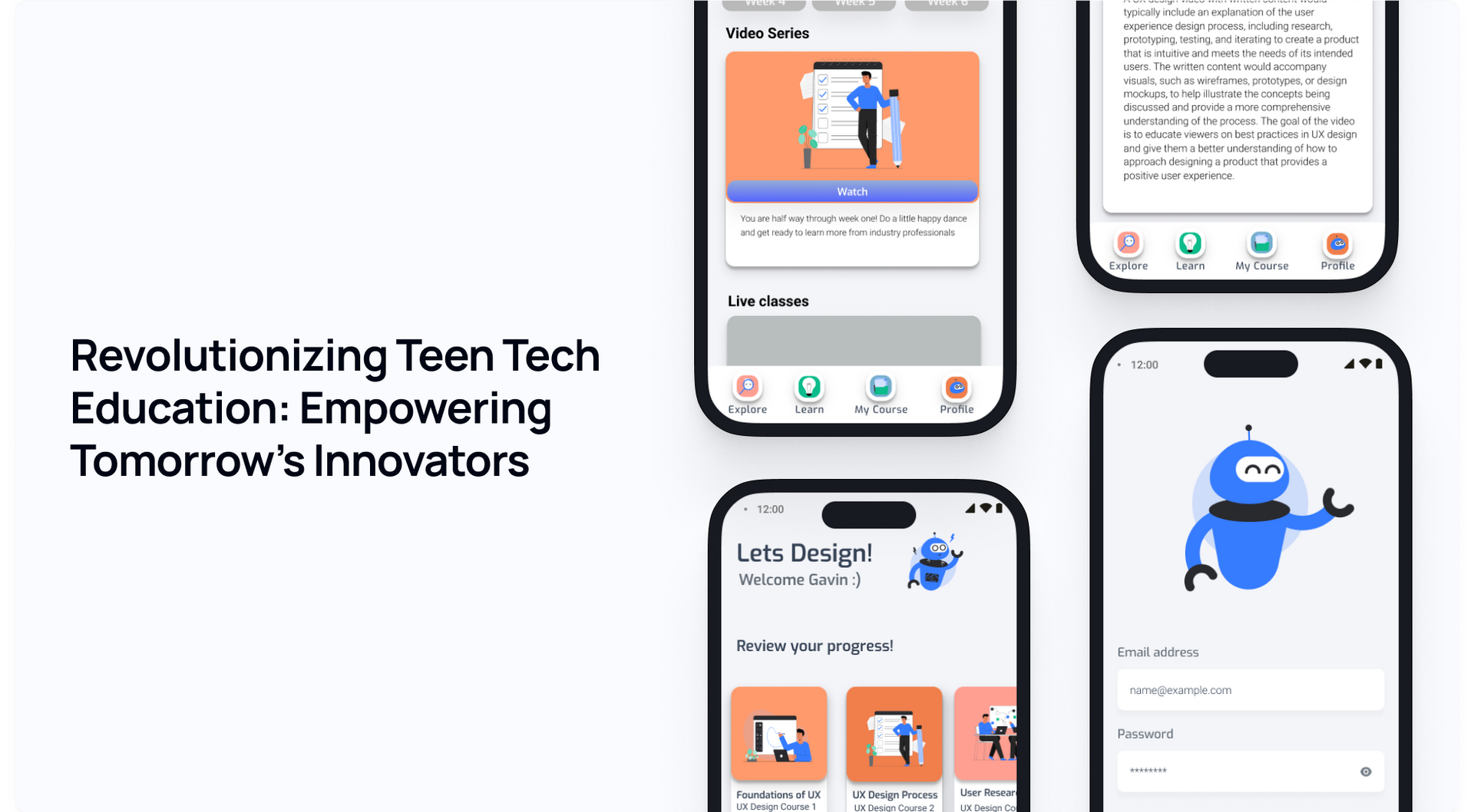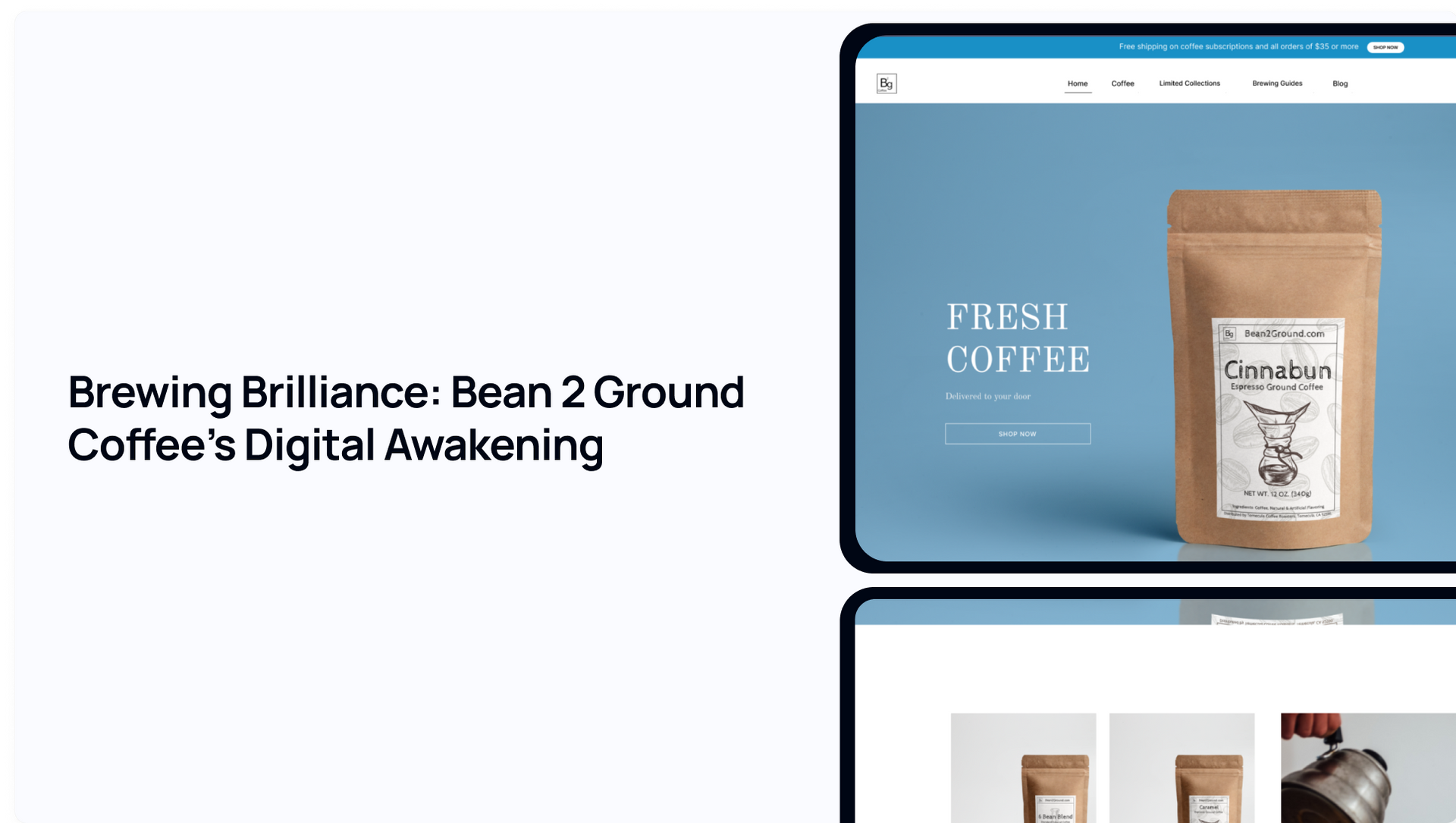AI-Driven Innovation: Transforming Requirements Gathering with Advanced Automation
Role
Lead UX/UI Engineer
Timeline
2023-2024
Company
NDA
In a fast-paced project environment, the need for a more efficient process became clear. I was brought in to lead the redesign of a platform aimed at simplifying complex workflows. My role as Lead UX Engineer involved guiding the design and front-end development, ensuring the platform was user-friendly and leveraged advanced technology to improve overall efficiency.
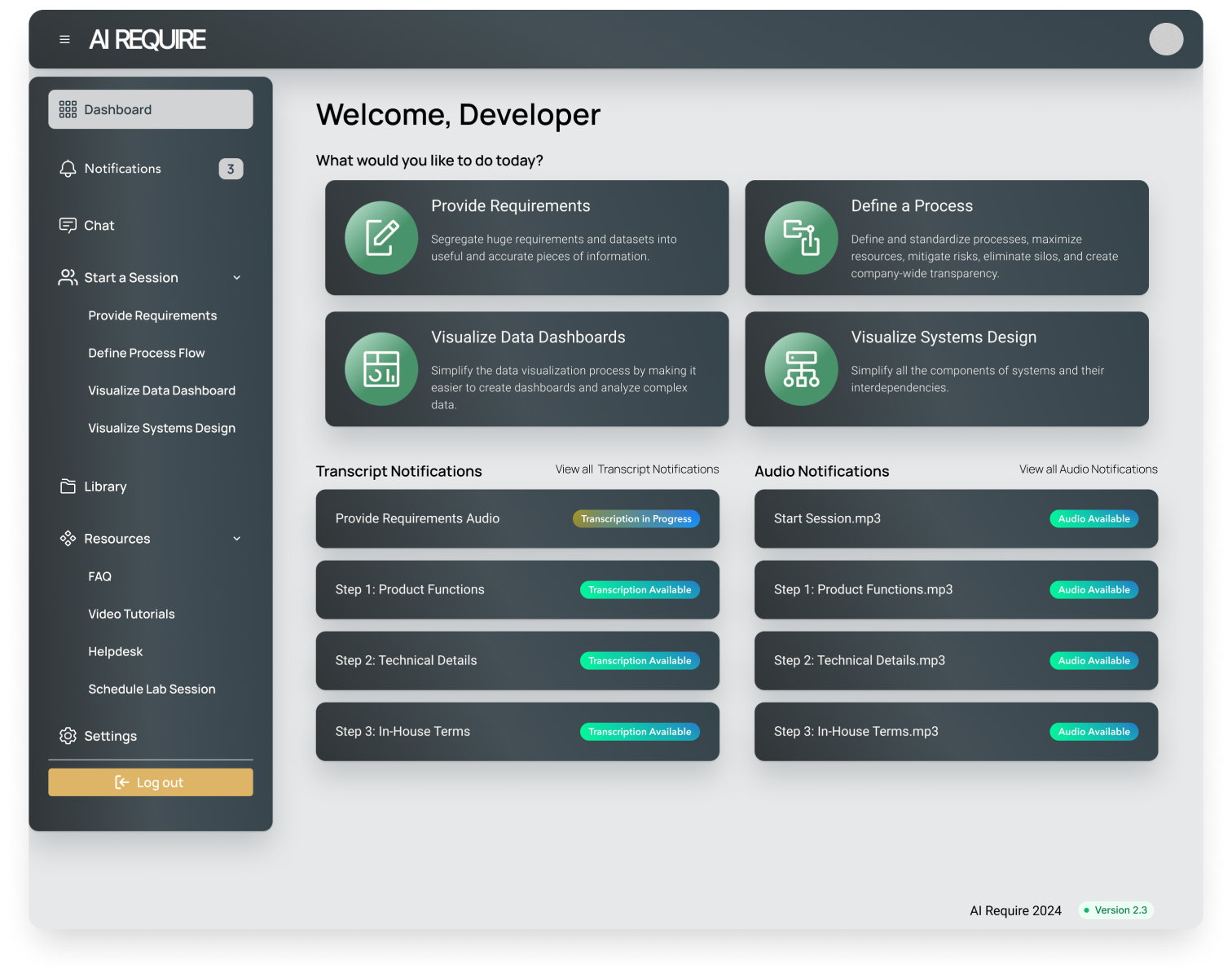
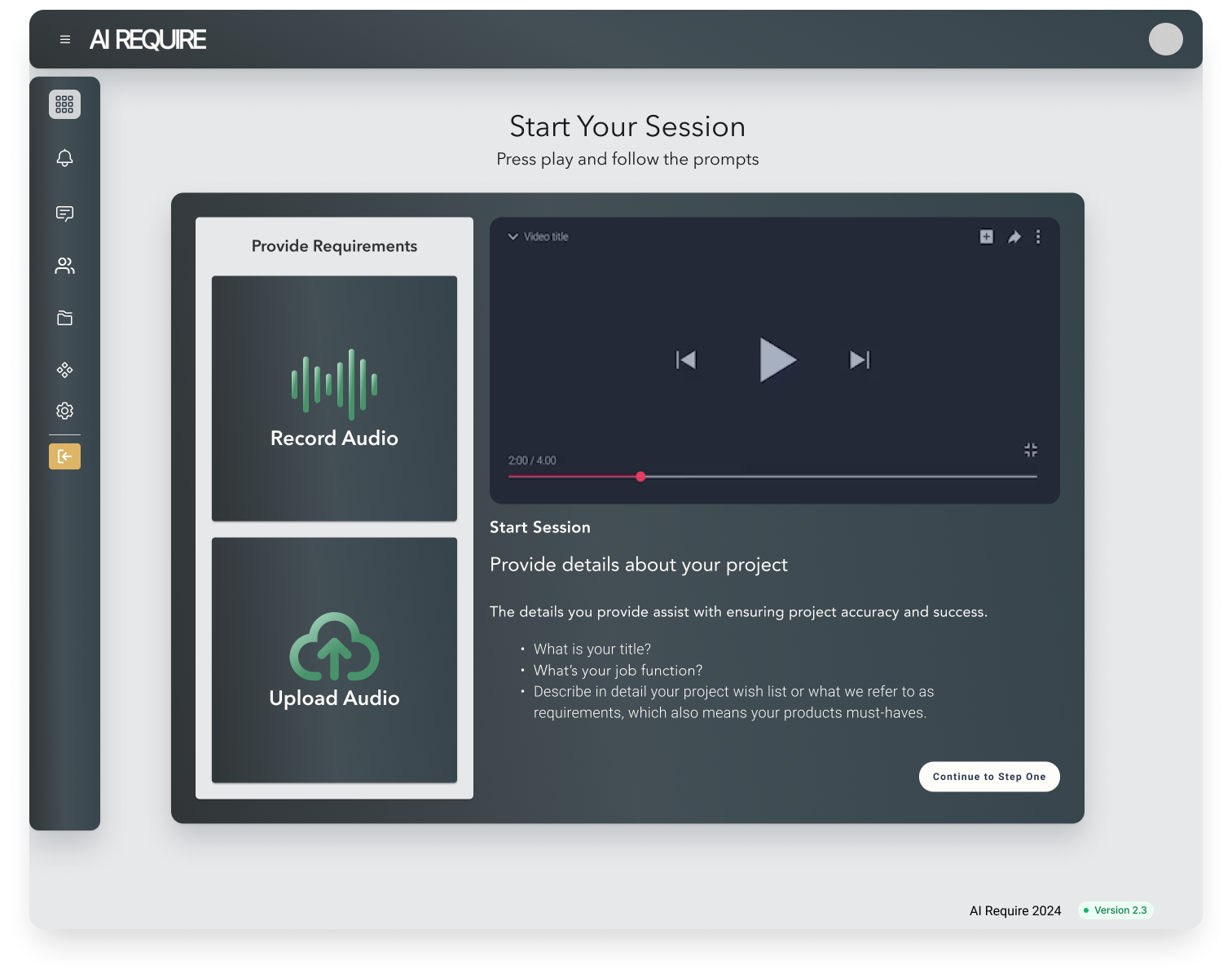
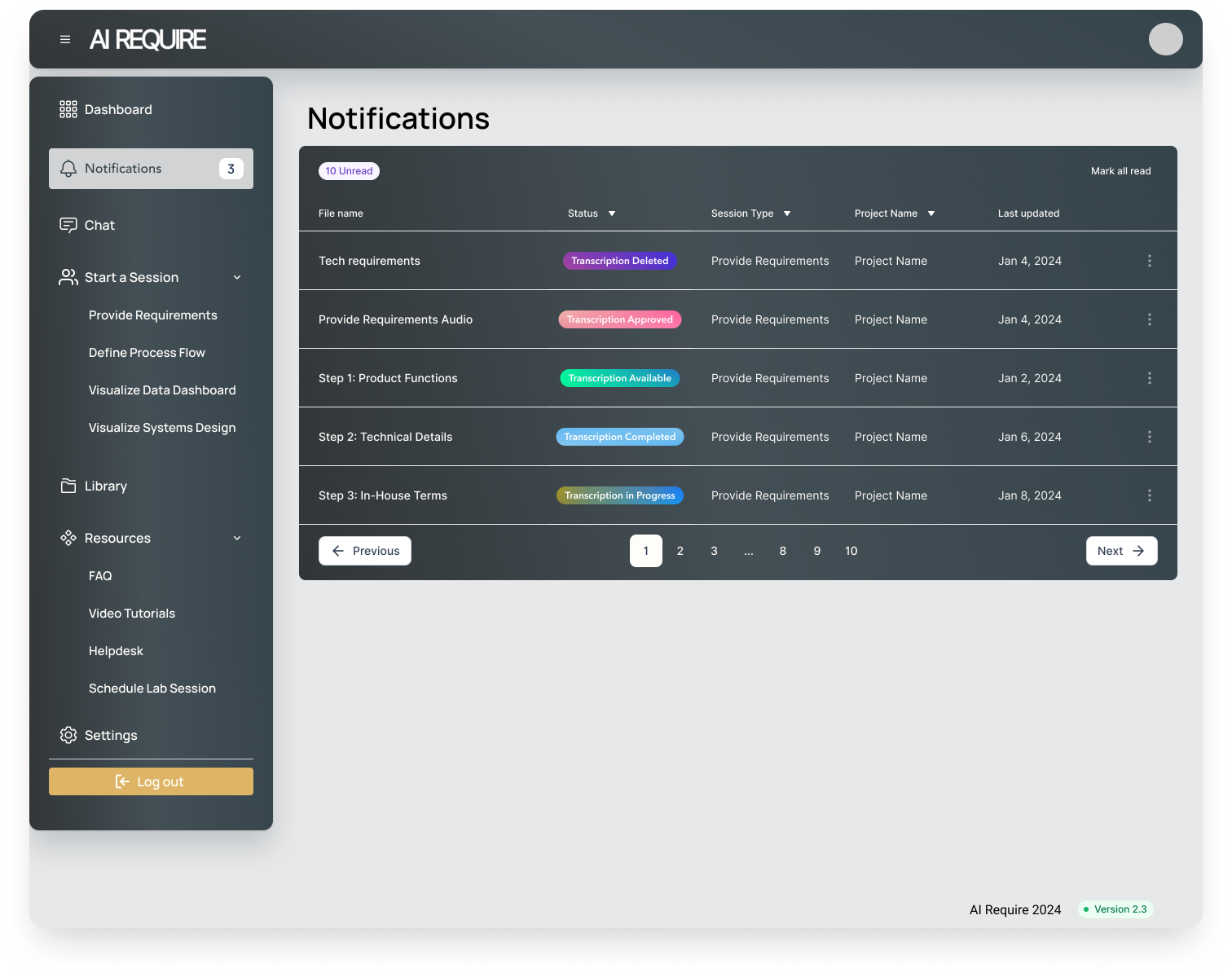
Version 1.8
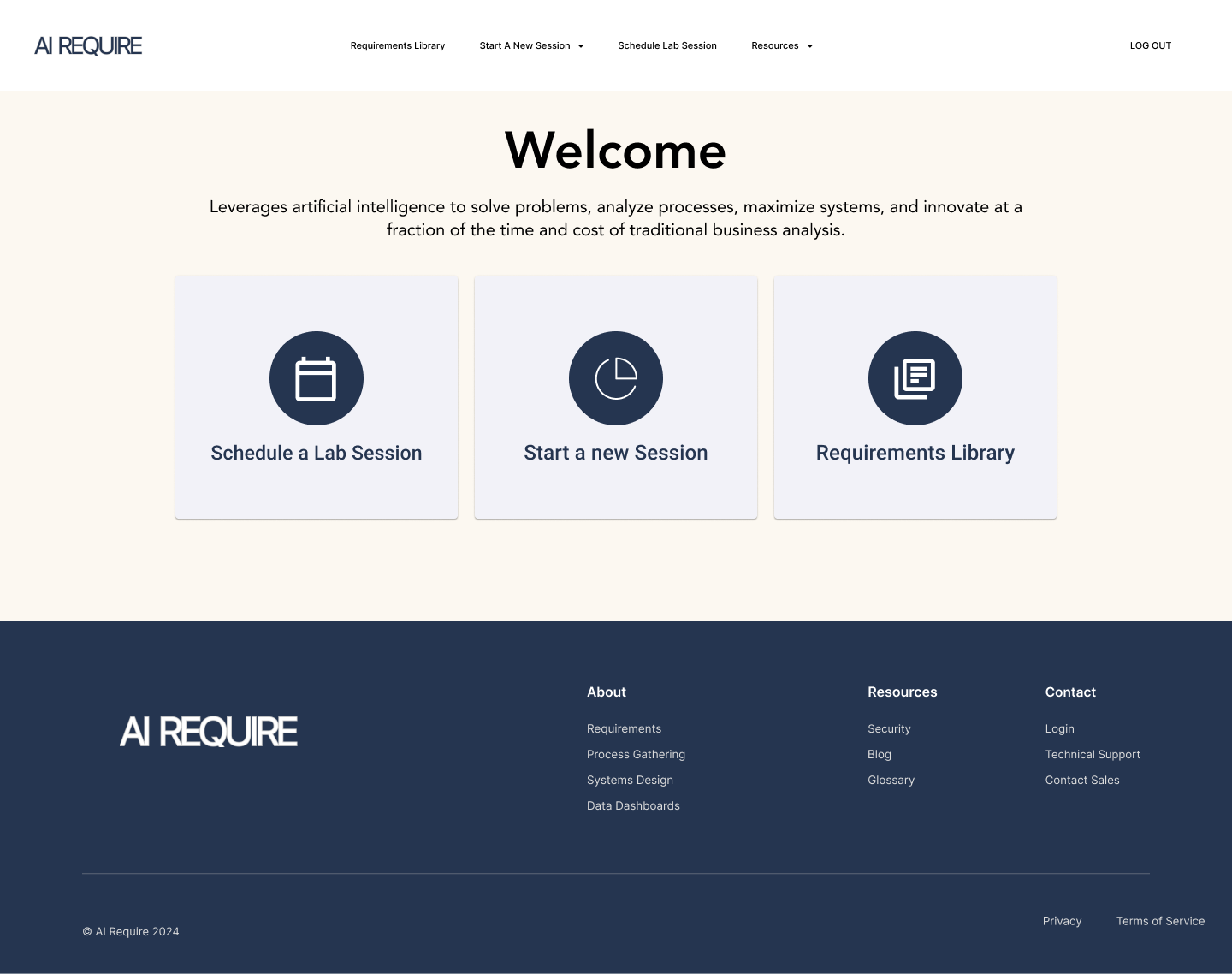
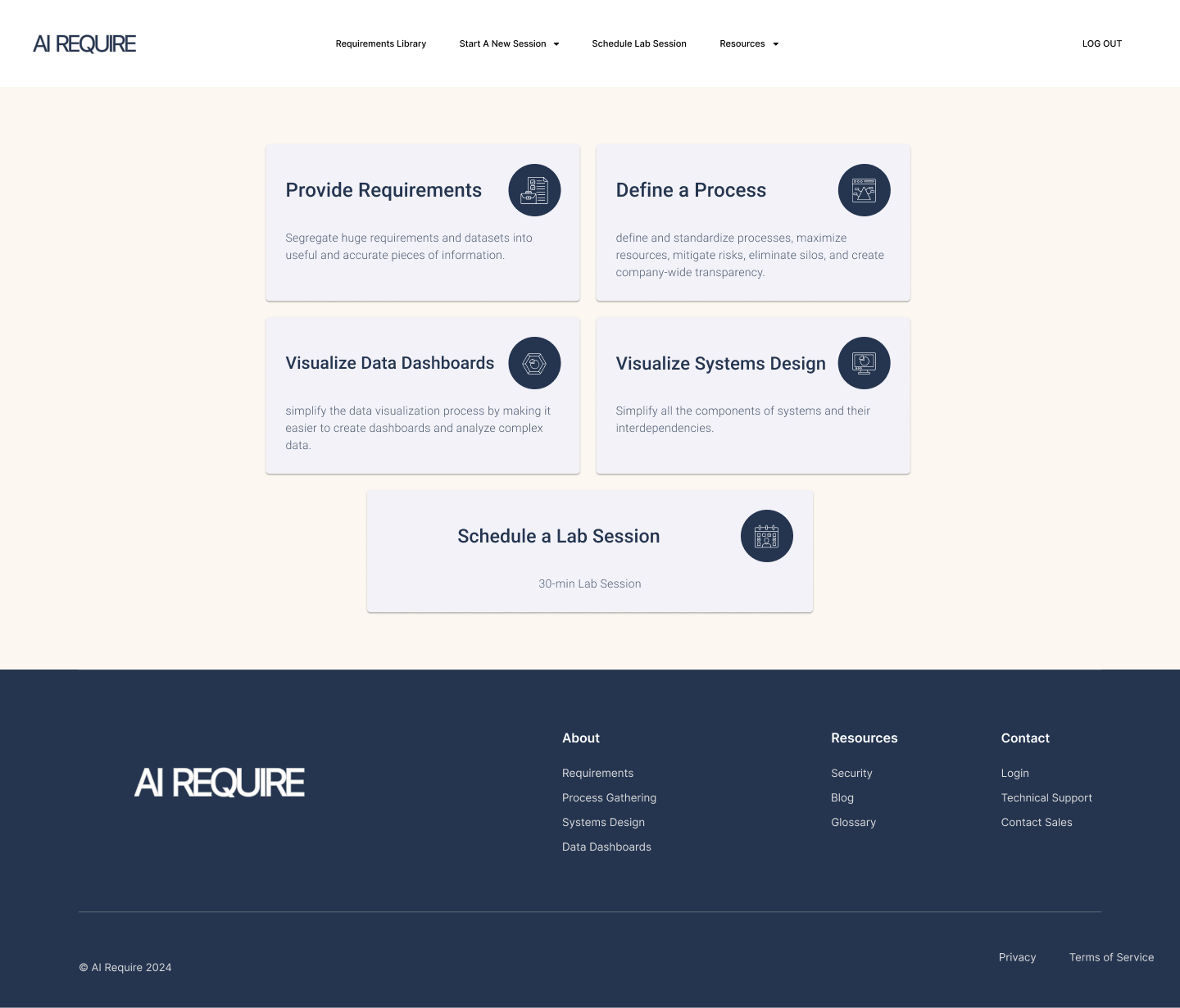
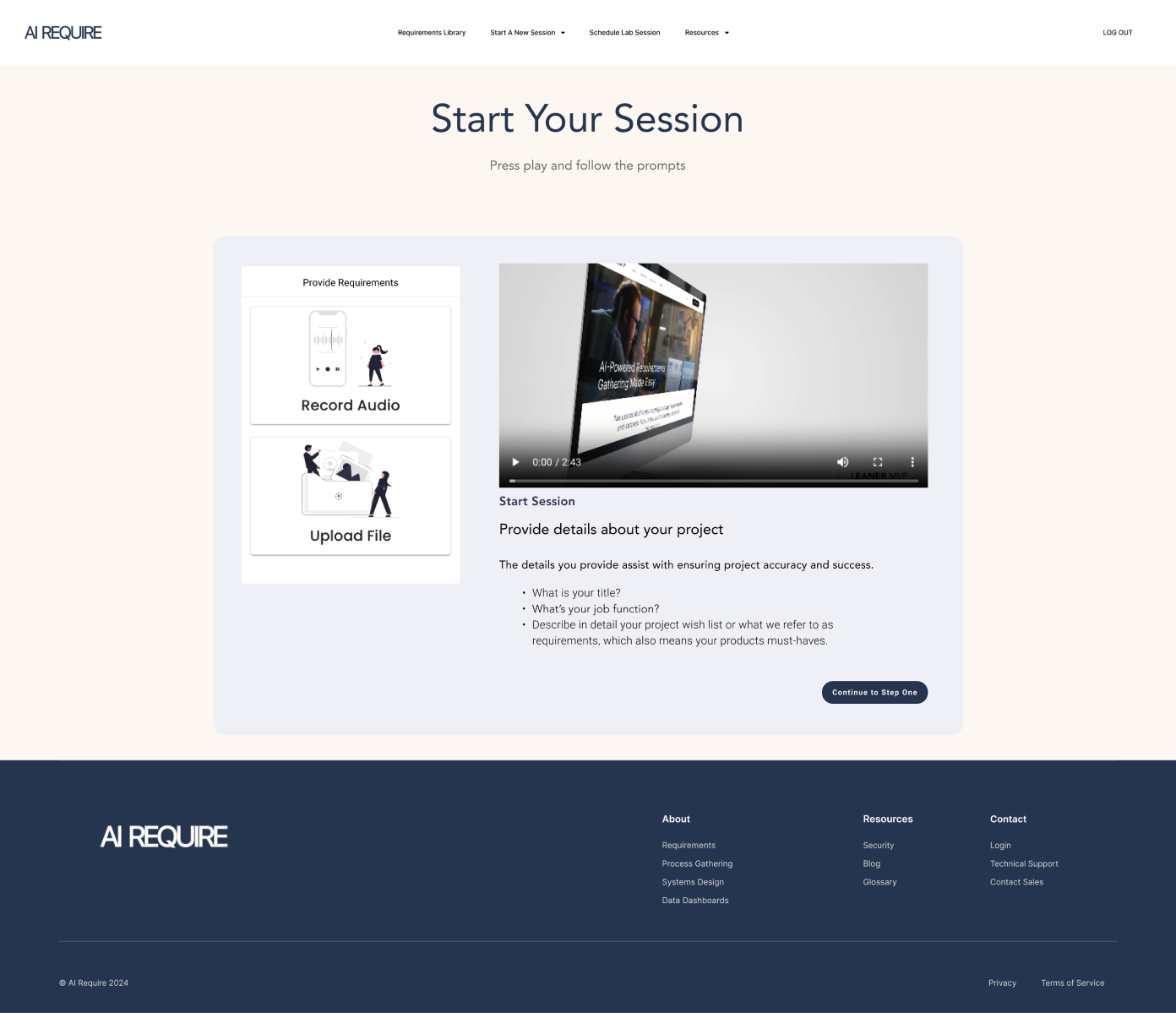
A Strategic Redesign - Version 2.3
This wasn't just about adding features; it was about rethinking the entire requirements process. Every design decision was guided by the "why," ensuring the final product tackled the core challenges faced by users and businesses alike, resulting in streamlined workflows, reduced errors, and significant time savings.
Empowering Users with Control
The redesign focused on giving users more control over their processes. The goal was to address why users struggled with refining their requirements, by integrating AI capabilities that made the platform intuitive and user-driven, enabling them to edit, approve, and manage their tasks with ease.
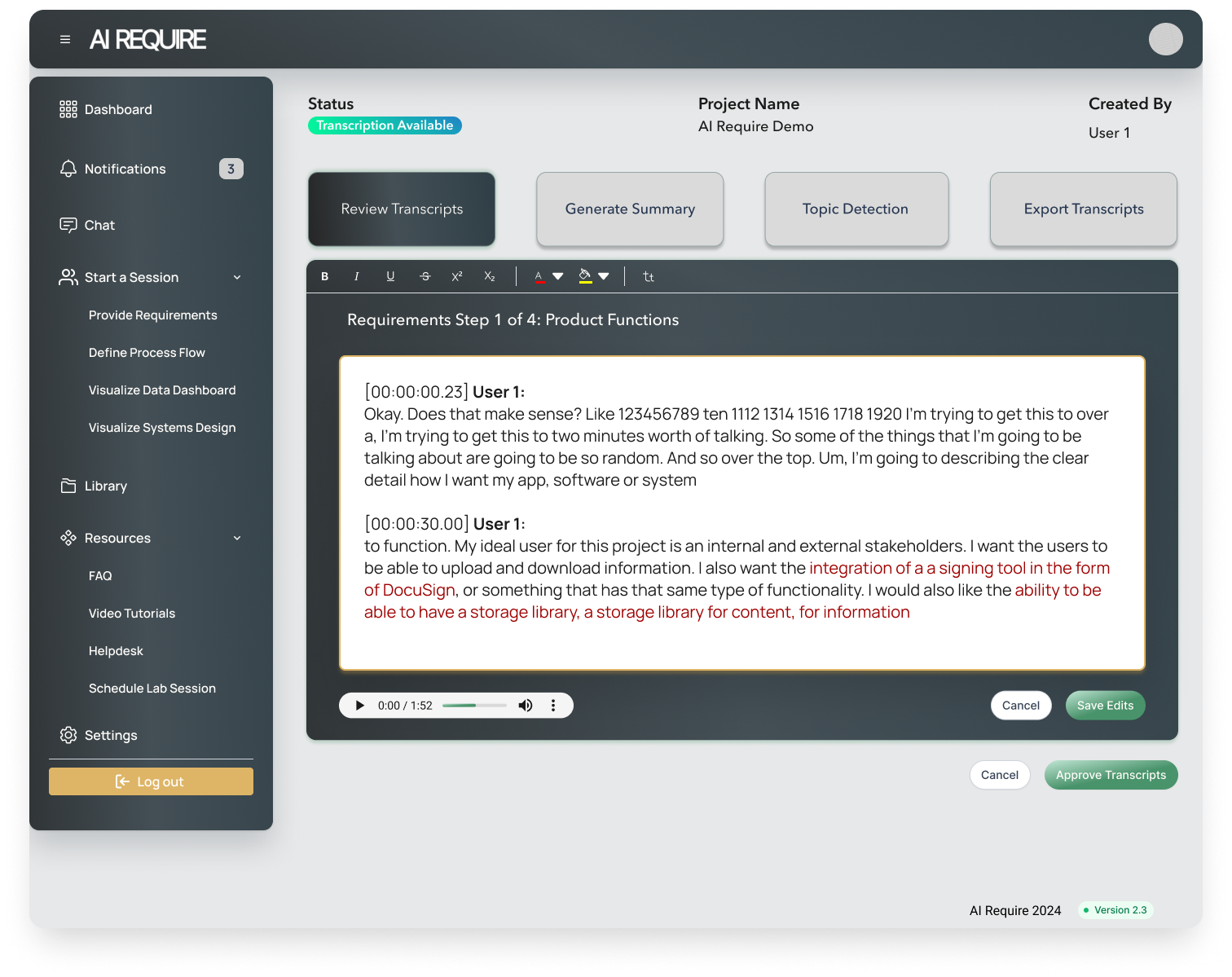
Aligning with Business Needs
This project also centered on aligning the platform with broader business objectives. We sought to minimize the delays businesses faced in turning ideas into actionable steps, enhancing both efficiency and accuracy, and enabling faster market delivery of high-quality products.
The Why behind building a better requirements tool
Inefficiencies in Traditional Requirements Gathering
Traditional methods are often bogged down by time-consuming steps that create delays. The manual process of transcribing meetings and turning spoken ideas into written requirements creates bottlenecks. The key question was: Why do these inefficiencies persist, and how can we eliminate them?
Lack of Real-Time User Control
Users were frustrated with the lack of immediate control over the requirements process. Delays in receiving and editing transcriptions left them waiting on manual processes. This raised the question: Why rely on slow, manual methods when automation can deliver instant results?
Challenges in Translating Ideas into Actionable Requirements
Translating spoken ideas into actionable steps often led to miscommunications and errors, causing project derailments. This underscored a critical need: Why do these translation challenges occur, and how can we streamline the process to ensure alignment with business goals?
Dependency on Manual Processes
The platform's reliance on manual processes for transcription and document management increased the risk of errors and consumed valuable resources. The problem was evident: Why stick to outdated manual processes when AI and automation offer more efficient, accurate alternatives?
Fragmented Document Management
Users found it difficult to manage and access various documents across multiple platforms, leading to a fragmented workflow. The challenge was clear: Why should users juggle multiple systems when a centralized, integrated solution could streamline their experience?
Insights from research - How can we make a better tool
Real-Time Capabilities Are Non-Negotiable
Users need immediate access to their transcriptions and the ability to interact with them in real-time. Any delay is a significant barrier to productivity.
Centralization and Integration
A seamless, integrated platform where all related documents and files can be accessed from one place is essential for maintaining an efficient workflow.
User Empowerment
Empowering users to control their documents—from editing transcriptions to generating requirement summaries—would significantly enhance the user experience and reduce reliance on external support.
These insights formed the foundation for the redesign, ensuring that the new platform not only met but exceeded user expectations. The focus was on creating a tool that was not just a passive recorder of requirements but an active participant in the process, empowering users to take control of their projects in real time.
Results and Impact
Efficiency Gains
The redesigned platform led to a 50% reduction in the time required for gathering and managing requirements. The integration of real-time transcription and document management drastically reduced manual effort, allowing users to focus more on decision-making.
Increased User Adoption
The enhancements resulted in a significant increase in user adoption. Clients who previously hesitated to use the platform due to inefficiencies became regular users, with daily engagement metrics showing marked improvement. The platform's ease of use and real-time capabilities received positive feedback, leading to higher satisfaction rates.
Streamlined Workflow
By centralizing all related documents and files within the platform, we eliminated the need for users to switch between multiple tools. This streamlined workflow saved time and reduced errors, leading to more accurate and reliable documentation.
Strategic Business Impact
The redesign had a broader impact on the business, enabling faster project kick-offs and reducing the time to market for new products. The automation and efficiency gains contributed to cost savings and improved project outcomes, making the platform a critical asset for users and the organization.
User Empowerment and Autonomy
Most importantly, the redesign empowered users to take control of their requirements gathering process. By providing real-time tools and integrated features, we enabled users to work more independently, reducing reliance on external support and boosting overall productivity.
